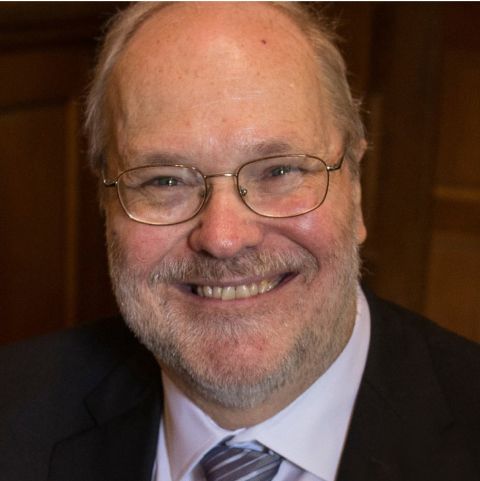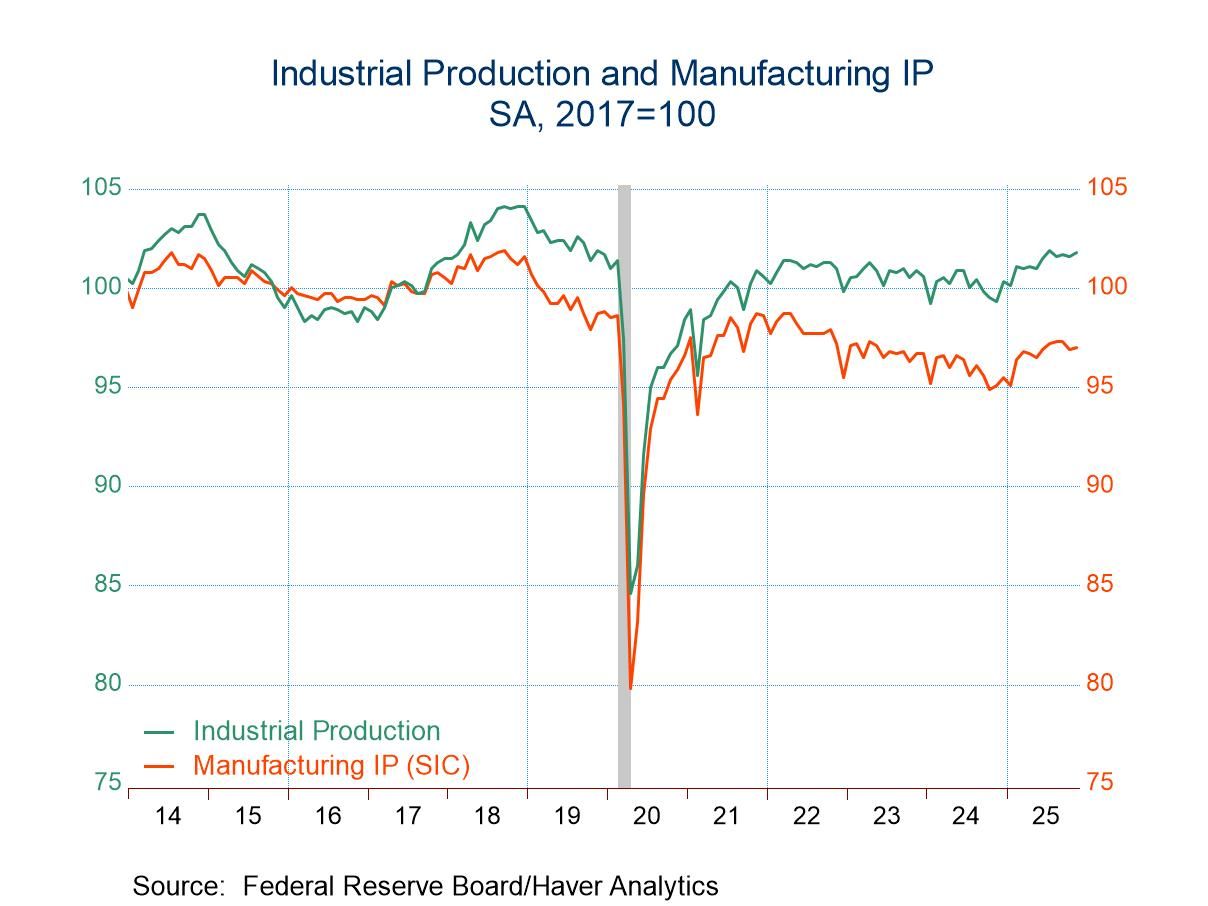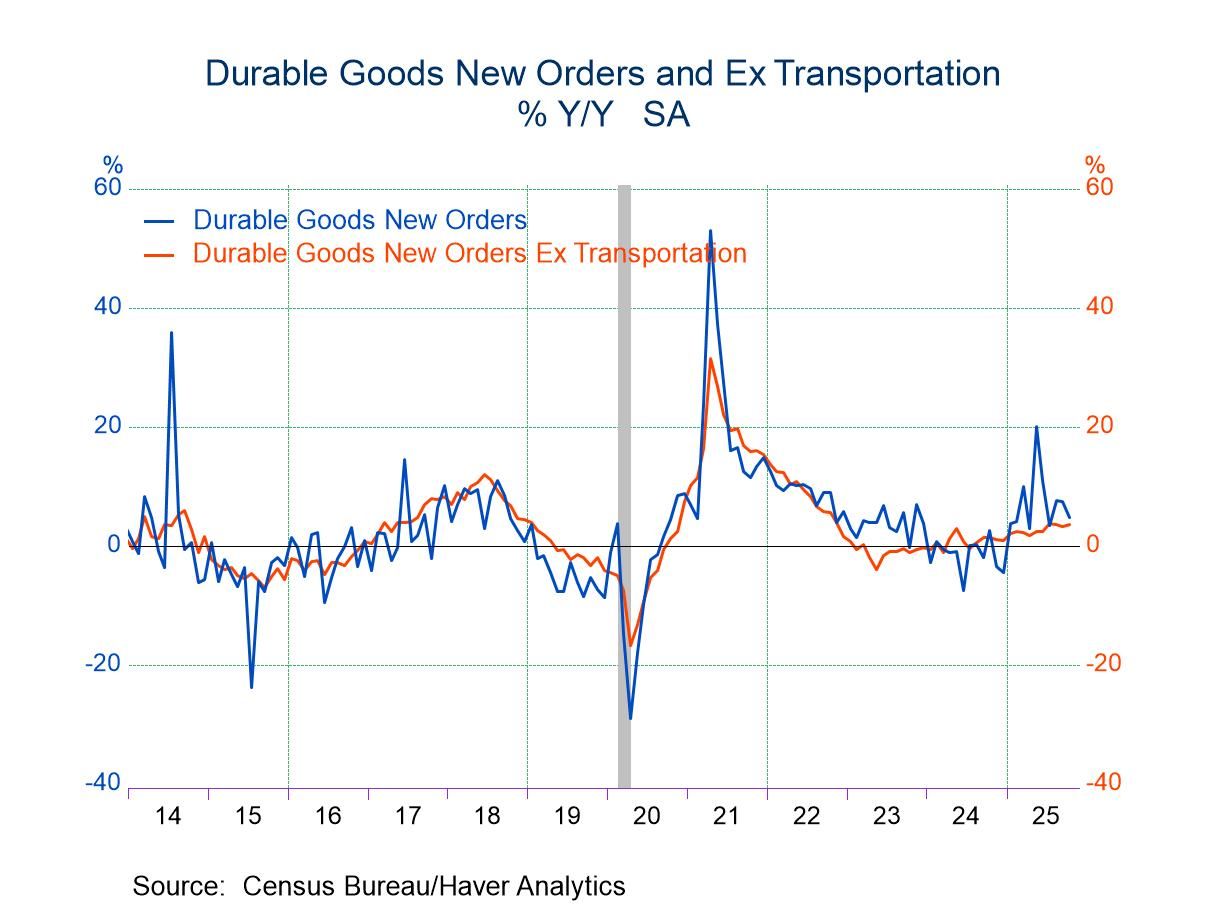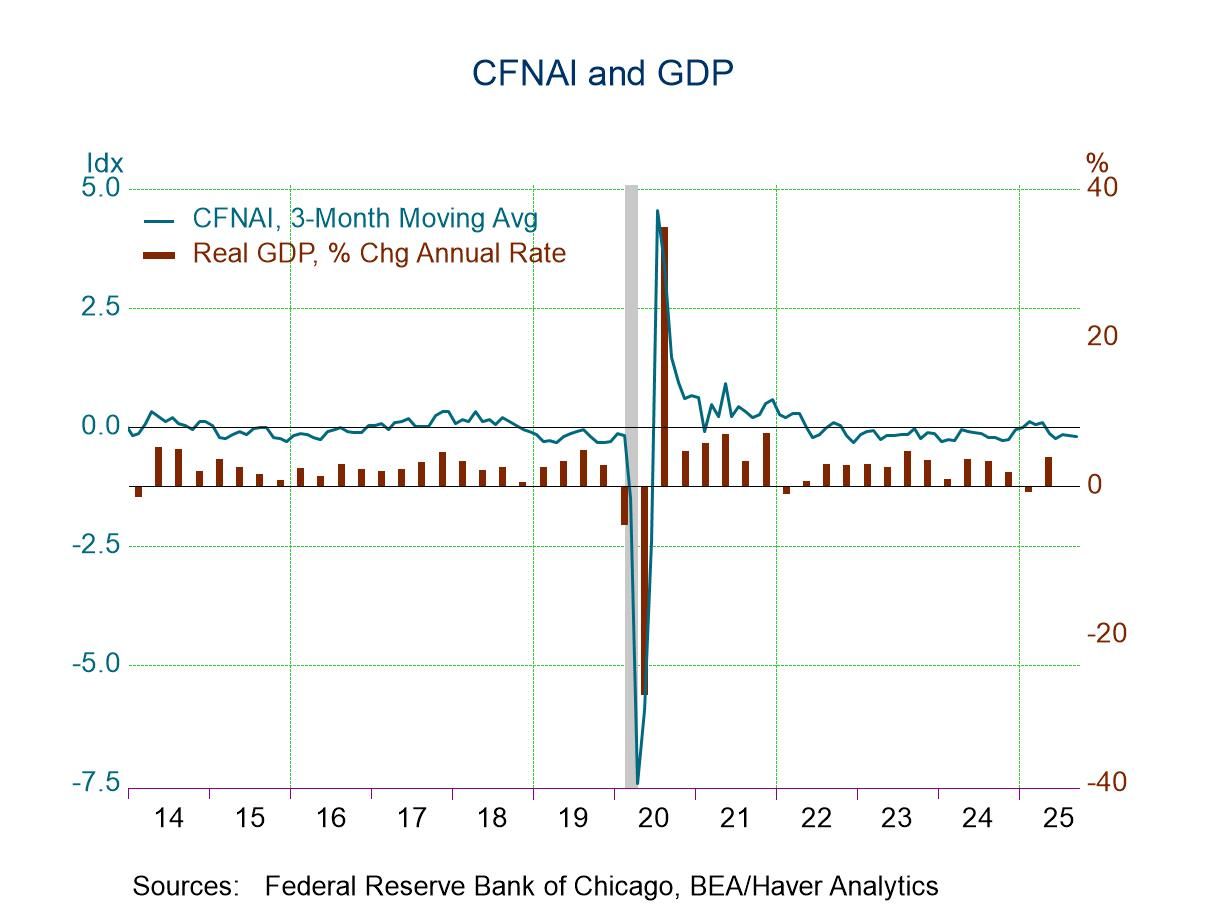U.S. ADP Employment Recovers in October
by:Tom Moeller
|in:Economy in Brief
Summary
- Gain in private payrolls is first in three months.
- Service-sector & construction hirings move up, but factory jobs decline.
- Wage growth steadies.
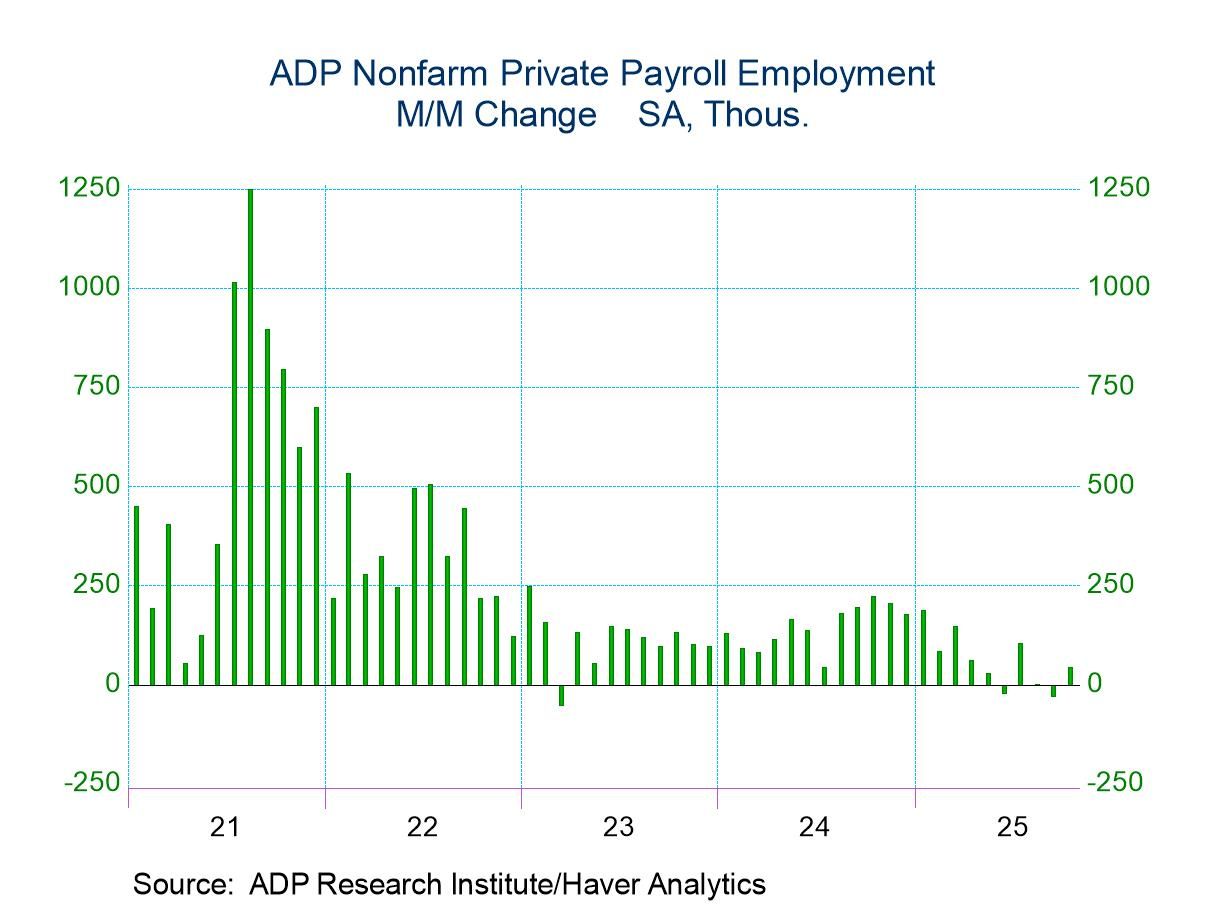
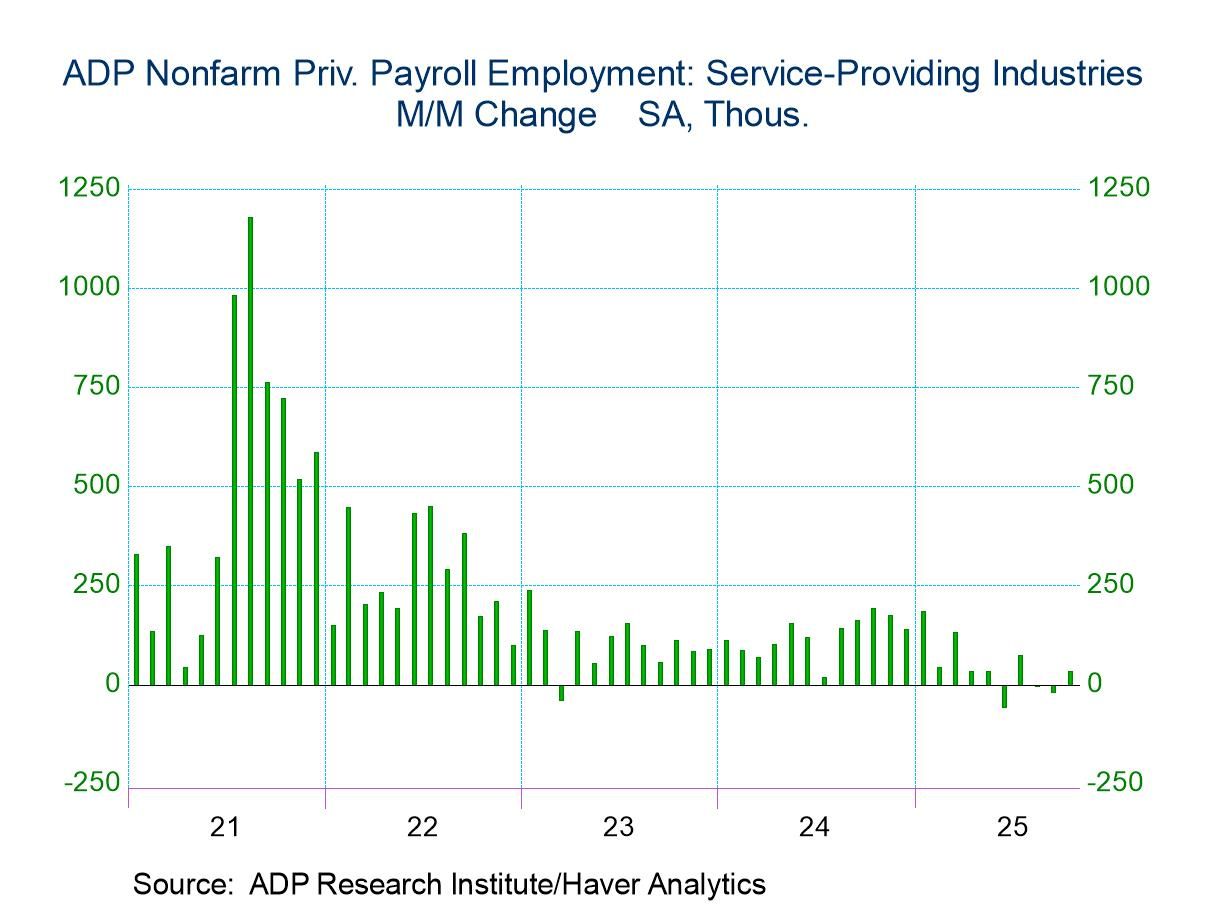
The ADP National Employment Report indicated that nonfarm private sector payrolls during October increased 42,000 (0.7% y/y) after declining 29,000 in September, revised from -32,000, and dipping an unrevised 3,000 in August. The three-month average change of 3,000 compares to 24,000 in Q3’25, 22,000 in Q2 and 139,000 in Q1. The Action Economics Forecast Survey expected a 25,000 increase in October.
Small business hiring (less than 50 employees) fell 10,000 (+0.1% y/y) after declining 34,000 in September, revised from -40,000. Employment at medium-sized firms (50-499 employees) weakened 22,000 (+0.7% y/y) after declining 30,000 in September, revised from a 20,000 fall. Large business hiring (500+ employees) offset these declines and rose 74,000 (2.2% y/y) after increasing 31,000 in September, revised from 33,000. It was the largest gain in twelve months.
Service-producing jobs increased 32,000 (0.7% y/y) in October after falling 21,000 in September, revised from -28,000. Changes amongst industry sectors were mixed. Trade, transportation & utilities employment rose 47,000 (0.3% y/y) after falling 6,000. Financial activities employment improved 11,000 (1.9% y/y) following a 9,000 decline in September. Education & health services rose 25,000 (0.2% y/y) after increasing 32,000 in September. Working lower, leisure & hospitality employment declined 5,000 (+2.4% y/y) after falling 16,000 in September. Professional & business jobs fell 15,000 (+0.1% y/y) following a 6,000 decline. Information sector employment weakened 17,000 (-0.0% y/y) after rising 1,000 in September.
Goods-producing employment moved up by 9,000 (1.0% y/y) in October, following a 7,000 decrease, revised from a 3,000 decline. Construction jobs rose 5,000 (1.8% y/y) after falling 4,000. Manufacturing jobs fell 3,000 (+0.2% y/y) following a 2,000 increase. Natural resources and mining jobs increased 7,000 (2.7% y/y) after declining 5,000 in September.
By region, in the Midwest employment rose 9,000 (0.8% y/y) last month after falling 55,000 in September. In the West, the number of jobs improved 39,000 (0.6% y/y) following a 16,000 increase. In the South, employment rose 5,000 (0.7% y/y) following a 17,000 September increase. Working lower, the number of jobs fell 12,000 (+0.9% y/y) in the Northeast in October after falling 5,000 in September.
Wage growth for job-changers in October held steady at 6.7% y/y, well below a high of 16.1% in April 2022. Wage growth for job-stayers advanced 4.5% y/y, unchanged from September and the slowest increase since June 2021. Across major industries, wage growth for job-stayers was reduced.
The ADP National Employment Report and Pay Insights data can be found in Haver's USECON database. Historical figures date back to January 2010 for private employment. Pay data date back to October 2020. The expectation figure is available in Haver's AS1REPNA database.
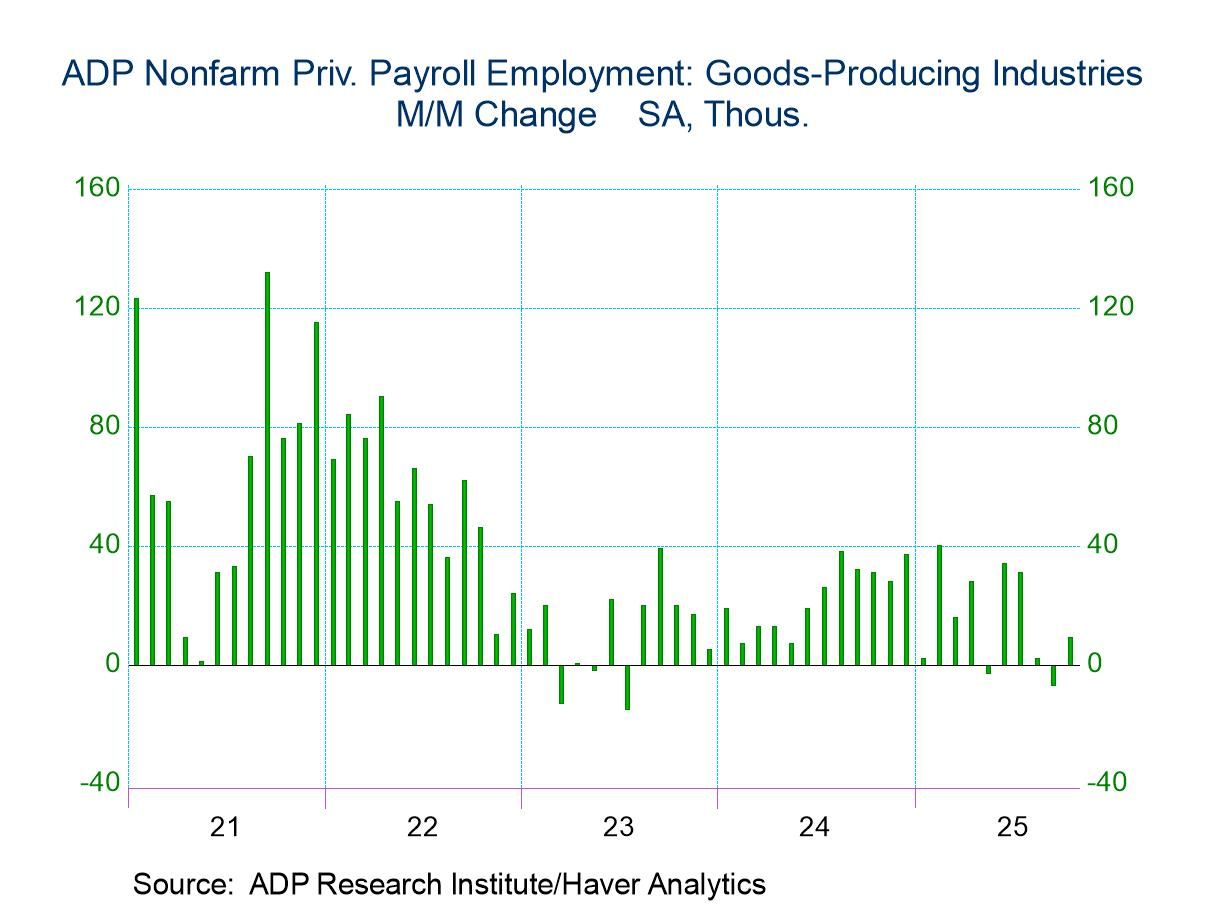
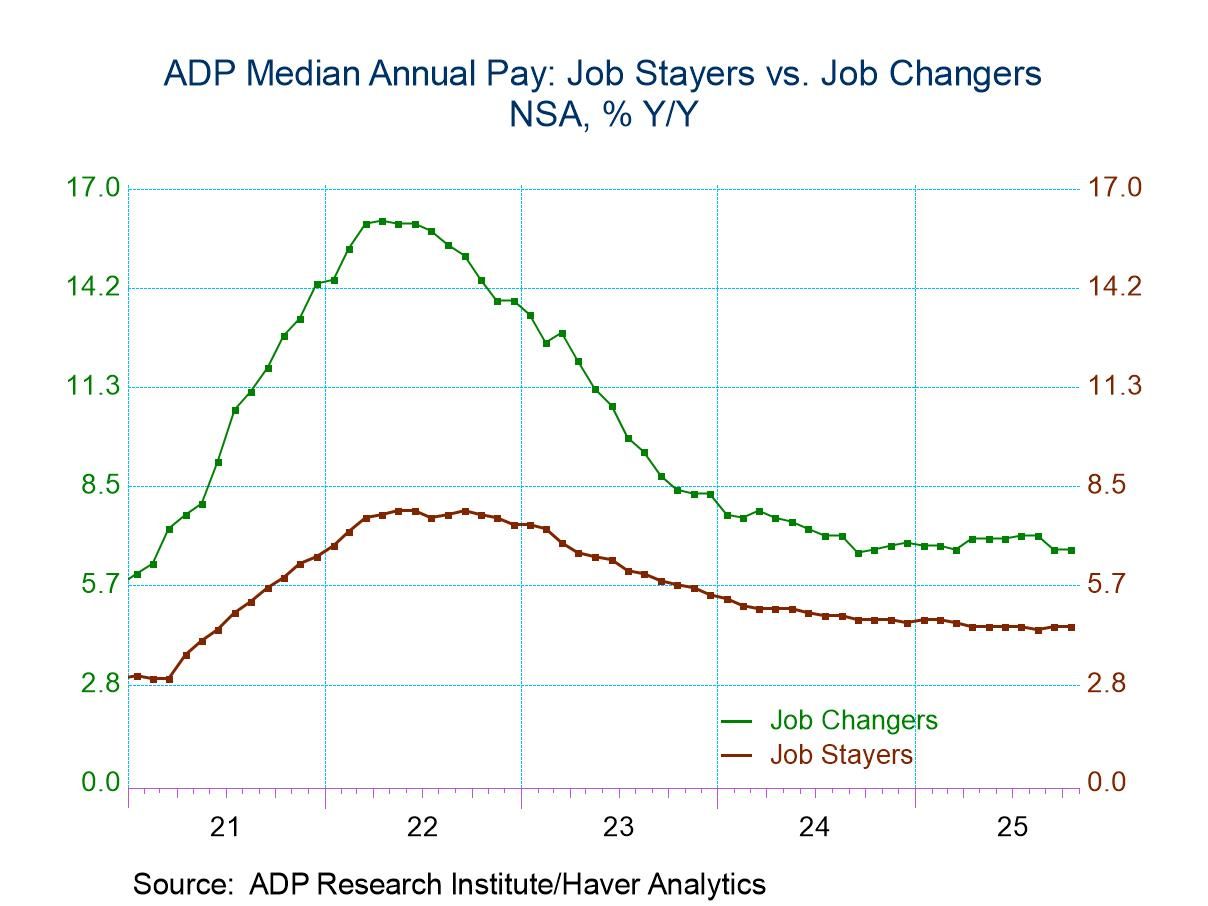
Tom Moeller
AuthorMore in Author Profile »Prior to joining Haver Analytics in 2000, Mr. Moeller worked as the Economist at Chancellor Capital Management from 1985 to 1999. There, he developed comprehensive economic forecasts and interpreted economic data for equity and fixed income portfolio managers. Also at Chancellor, Mr. Moeller worked as an equity analyst and was responsible for researching and rating companies in the economically sensitive automobile and housing industries for investment in Chancellor’s equity portfolio. Prior to joining Chancellor, Mr. Moeller was an Economist at Citibank from 1979 to 1984. He also analyzed pricing behavior in the metals industry for the Council on Wage and Price Stability in Washington, D.C. In 1999, Mr. Moeller received the award for most accurate forecast from the Forecasters' Club of New York. From 1990 to 1992 he was President of the New York Association for Business Economists. Mr. Moeller earned an M.B.A. in Finance from Fordham University, where he graduated in 1987. He holds a Bachelor of Arts in Economics from George Washington University.


